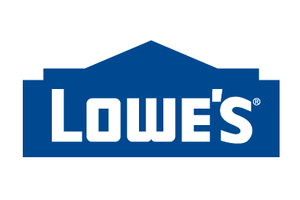After continuing its long-term efforts to improve pro offerings in stores and online, Lowe’s delivered pro comps of over 16% in the fiscal third quarter and over 43% on a two-year basis. Pro growth again outpaced DIY sales growth at Lowe’s as the home-improvement retailer continues to focus on pro service levels, deeper inventory quantities, a more intuitive store layout, and an increased number of pro brands.
“Our pro customers are expressing appreciation for our new in-store convenience features, including pro trailer parking, free phone charging stations, and air stations for refilling tires,” Joe McFarland, the executive vice president of stores for Lowe’s, said during the company’s third quarter earnings call. “This helps them get in and out of our stores quickly with additional conveniences that cut down on the number of stops they need to make during the week. Time is money for this busy customer, so we’re focused on helping them maximize the time they spend on the job site.”
As part of its pro focus, Lowe’s took steps to improve inventory and job lot quantities in 2019 and launched its Lowe’s For Pros Loyalty program in 2020. Additionally, the home-improvement retailer introduced a Lowe’s Tool Rental program, launched a job site for pros in partnership with Streem, and partnered with HomeAdvisor to offer pro loyalty customers one-year subscriptions to the lead generation platform. Most recently, Lowe’s entered a more strategic phase of growth in the pro market by resetting the layout of its stores with pros in mind. The revamped pro shopping experience includes a dedicated Pro Zone area near the pro entrance with grab-and-go product section featuring popular pro items, and specially selected products.
Additionally, Lowe’s president and CEO Marvin Ellison said the home-improvement retailer completed the conversion of its second geographic market, the Ohio Valley region, to a market-based delivery model for big and bulky products. Lowe’s have previously converted the Florida market to such a delivery model. Ellison said the company plans to rollout the market-based model to the entire U.S. over the next year and a half.
“In the market-based delivery model the big and bulky products flow from our supply chain directly to consumers’ homes, bypassing the stores altogether,” Ellison said. “This replaces the legacy store delivery model, which is highly inefficient and relies on each store to function as its own distribution node for these products. This new delivery model is already driving higher sales in appliances, improved operating margins, reduced inventory and higher on-time delivery rates.”
Lowe’s is continuing to leverage its e-commerce platform, and saw online sales increase 25% on top of 106% growth in the third quarter of 2020. The sales growth for Lowes.com represented a 9% sales penetration in the third quarter of 2021 and a two-year comp of 158%.
Overall Financial Performance
In the fiscal third quarter, Lowe’s reported net earnings of $1.9 billion, compared to net earnings of $692 million in the same period of 2020. Total quarterly sales were $22.9 billion, compared to $22.3 billion in the third quarter of 2020. U.S. sales comps increased 2.6% for the third quarter and 34% on a two-year basis.
The home-improvement retailer reported strength in the appliance and flooring product categories, contributing to an 11% increase in tickets over $500 in the quarter. The comparable average ticket increased 9.7% during the quarter, drive by appliance and flooring improvement, as well as product inflation. Comps in the retailer’s building products division were slightly down compared to the prior year, due to decreased DIY demand for lumber, according to executive vice president of merchandising Bill Boltz.



